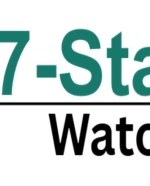Company Search
Find Production Companies for Models, Actors, Content Creators & More
Locations
Production Types
Gain access to thousands of jobs and appear higher in the search results now!
Running an online store means making dozens of pricing decisions every week. When you sell vintage items, collectibles, or handmade pieces incorporating older materials, pricing gets even trickier. Unlike mass-produced goods with clear wholesale costs, each vintage piece has its own story and value. Many Big Cartel sellers work with vintage jewelry, antique coins, retro clothing, and other collectible items. Getting the price right means understanding what makes these items worth what buyers will pay.

Why Vintage Items Are Different
Modern retail products have straightforward pricing formulas. You buy wholesale, multiply by two or three, and you have your retail price. Vintage and collectible items don't work that way Each piece has unique factors that affect its value. Age matters, but a 100-year-old item isn't automatically worth more than something from the 1980s. Condition, rarity, demand, and provenance all play a role. Take vintage coins as an example. A common 1964 quarter might sell for its silver content value (around $4-5 based on current silver prices), while a rare 1932-D Washington quarter in excellent condition could fetch several thousand dollars. The difference comes down to mintage numbers, survival rates, and collector demand.
Research Comes First
Before pricing any vintage item, spend time researching comparable sales. Here's what to look for. Completed listings show what buyers actually paid, not just what sellers hoped to get. Check eBay's sold listings, Etsy's market data, and specialized collector forums. Look for items in similar condition sold within the past 90 days. Reference guides provide baseline values. The Official Red Book (A Guide Book of United States Coins) offers retail prices for coins. Kovels' price guides cover antiques and collectibles. These books give you starting points, though actual sales prices often vary. Professional appraisals make sense for high-value items. Certified appraisers charge fees but provide documented valuations you can stand behind. For items over $500, this investment protects both you and your buyers.
Grading and Condition Matter More Than You Think
The condition of vintage items dramatically affects their value. Learn the grading standards for your niche. Coins use a 70-point scale, with 70 being perfect and 1 being barely identifiable. Most circulated coins fall between 3 and 50. Even small differences matter. A coin graded MS-65 (Mint State 65) might sell for $100, while the same coin at MS-67 could bring $1,000. For vintage clothing, document any flaws honestly. Small holes, stains, missing buttons, or repairs should appear in your description and affect your price. Buyers appreciate transparency. Vintage jewelry requires checking for hallmarks, testing precious metal content, and examining stones. A piece marked "14K" contains 58.3% pure gold. Understanding these standards helps you price accurately.
Understanding Metal Values
Many vintage items contain precious metals. Knowing the melt value (what the raw metal is worth) establishes a price floor. Silver items follow the spot price of silver, which changes daily. One troy ounce of silver might trade at $23 today and $25 next week. Pre-1965 U.S. dimes, quarters, and half dollars contain 90% silver. At $23 per ounce, a pre-1965 quarter has about $4.05 in silver content. Gold works similarly. A 14K gold ring weighing 5 grams contains about 2.9 grams of pure gold. With gold at $1,900 per ounce, that's roughly $180 in gold value. The ring should sell for more than melt value if it has artistic or collectible merit. Websites like Coinflation.com calculate metal values for coins. Kitco.com provides current precious metal prices. Resources like US Gold and Coin offer educational guides on precious metal content and coin values. Check these regularly if you sell items with metal content.
The Rarity Factor
Scarcity drives collectible values. An item might be old and beautiful, but if thousands exist, prices stay modest. Research production numbers when possible. Mint records show how many coins were made each year. Limited edition items often include production numbers on certificates or packaging. Survival rates matter too. Many items were produced in large quantities but few survive in good condition. World War II-era items might have high production numbers but low survival rates due to their use and age.
Setting Your Actual Price
After researching comparables, grading condition, and understanding metal values, you're ready to price your item. Start with the comparable sales average. If similar items sold for $50, $65, and $58 in the past month, you're looking at roughly $58 as your baseline. Adjust for condition. If your item is in better shape than the comparables, price up. Worse condition means pricing down. Consider your costs. Account for what you paid to acquire the item, authentication or grading fees, photography, and the time you spent researching and listing it. Build in your margin. You're providing a service by curating, authenticating, and presenting these items. Your expertise has value.
When to Price Below Market
Sometimes pricing below comparable sales makes sense. Here's when. If you need quick turnover, competitive pricing moves inventory faster. Sellers with tight cash flow or limited storage space benefit from faster sales over maximum profit per item. When an item has been listed for months without interest, the market is telling you something. Drop the price or rethink your approach. For bulk purchases where you got a deal, you can pass savings to buyers while still profiting. This builds customer loyalty and encourages repeat business.
Avoid These Pricing Mistakes
Don't price based solely on what you paid. Your acquisition cost doesn't determine market value. You might have overpaid, or you might have found a steal. Skip emotional pricing. That vintage brooch might remind you of your grandmother, but buyers pay for objective factors like metal content, maker, and condition. Don't ignore slow sales. If an item sits unsold for three months, your price is wrong. Drop it, bundle it, or remove the listing and try again later. Avoid copying competitor prices blindly. They might not know what they're doing either. Do your own research.
Building Trust Through Transparency
Show your research. Mention reference guides you consulted. Link to authentication resources. Explain how you determined the item's age or origin. Photograph everything. Multiple angles, close-ups of marks and flaws, and size comparisons help buyers understand what they're getting. Offer return policies. This reduces buyer hesitation and shows confidence in your descriptions. Provide certificates when available. Third-party grading certificates, appraisal documents, and provenance records justify higher prices and reduce buyer risk.
Price Adjustments Over Time
Your initial price isn't permanent. Watch your metrics. If you get favorites or messages within the first week but no sales, your price might be slightly high. A 10% reduction often triggers purchases. No activity at all suggests your price is too high or your item has limited appeal at any price. Drop the price significantly or consider different marketing. Multiple inquiries and quick sales mean you could have priced higher. Remember this for similar future listings.
Learning Your Market
Pricing gets easier as you specialize. Sellers who focus on specific eras, materials, or item types develop expertise faster than generalists. Join collector communities. Online forums, Facebook groups, and Reddit communities share knowledge freely. Ask questions and learn from experienced collectors. Attend shows and auctions. Seeing items in person and watching bidding behavior teaches you about demand and pricing psychology. Track your own data. Keep a spreadsheet of your listings with acquisition costs, listing prices, sale prices, and time to sell. Patterns emerge.
The Bottom Line
Pricing vintage and collectible items requires research, honesty about condition, and understanding of your costs. Start with comparable sales, adjust for your item's specifics, and be willing to adapt. Your pricing strategy reflects your business model. Fast turnover with modest margins can work as well as selective, high-margin sales. Choose what fits your goals and your market. The most successful vintage sellers balance knowledge with flexibility. They know their items' worth but recognize that the right price is what a buyer will pay today, not what a book says or what they hope to get. Looking to learn more about evaluating vintage coins and precious metals? US Gold and Coin offers educational resources on coin grading, metal values, and collectible authentication at usgoldandcoin.com.
The entertainment industry is a dynamic and ever-evolving landscape brimming with opportunities for aspiring and established actors, models, and content creators. Whether you’re just starting your career or looking to elevate it to new heights, finding the right opportunities can be a daunting task. That’s where Project Casting’s Companies page comes into play—a comprehensive directory designed to connect talent with companies actively seeking new faces and fresh content.
Why the Companies Directory Matters
In an industry where networking and connections are crucial, having access to a curated list of companies hiring talent can make all the difference. The Project Casting Companies page serves as a centralized hub, bringing together a diverse range of companies—from casting agencies and production houses to modeling agencies and brands seeking influencers. This directory simplifies your search, saving you time and energy so you can focus on honing your craft.
Unlock a World of Opportunities
Our Companies directory is more than just a list; it’s a gateway to countless opportunities across the entertainment spectrum. Here’s what you can expect:
- Diverse Listings: Find companies specializing in film, television, commercials, fashion, digital media, and more.
- Global Reach: Access opportunities not just locally but also in major markets around the world.
- Updated Information: Stay informed with the latest company profiles, ensuring you have current contact information and details about ongoing projects.
Understanding the Entertainment Landscape
The entertainment industry is not just about glamour and red carpets; it’s a complex ecosystem that requires dedication, skill, and strategic networking. With the rise of digital media, the demand for fresh faces and innovative content has skyrocketed. Streaming platforms, social media, and online advertising have opened new avenues for talent to showcase their abilities. However, navigating this vast landscape can be challenging without the right tools and resources.
Project Casting: Bridging Talent and Opportunity
Project Casting was created with a vision to democratize access to opportunities in the entertainment sector. By providing a platform where talent can easily find and connect with companies, we aim to streamline the process of job hunting in this competitive field.
- Comprehensive Database: Our Companies directory is meticulously curated to include reputable companies actively seeking talent.
- Trusted Platform: With years of experience in the industry, Project Casting has built a reputation for reliability and quality.
- Supportive Environment: We offer resources not just for job listings but also for career development, including workshops, webinars, and industry news.
For Actors
As an actor, landing the right role often depends on being in the right place at the right time. With our directory, you can:
•Discover Casting Agencies: Connect with agencies that can help you find auditions and roles suited to your skills.
•Explore Production Companies: Get in touch with companies producing films, TV shows, and web series.
•Learn About Upcoming Projects: Stay ahead by knowing which companies are starting new projects that might need your talent.
For Models
The modeling industry is competitive, but the right connections can set you apart. The Companies page allows you to:
- Find Modeling Agencies: Locate agencies that represent models in fashion, commercial, editorial, and other niches.
- Connect with Brands: Engage directly with brands looking for models for campaigns, lookbooks, and promotional events.
- Stay Informed: Keep up with industry trends and know which companies are expanding their talent roster.
For Content Creators
In the digital age, content creators are in high demand. Whether you’re a photographer, videographer, influencer, or social media guru, our directory helps you:
- Partner with Brands: Collaborate with companies seeking fresh content for their platforms.
- Network with Agencies: Connect with agencies that represent digital talent and can open doors to bigger projects.
- Expand Your Reach: Find opportunities to showcase your work on larger platforms and grow your audience.
Navigating the Companies Directory
To ensure you get the most out of the Companies page, here’s a step-by-step guide:
1. Set Up Your Profile: A complete and professional profile increases your visibility and attractiveness to potential employers.
2. Use Advanced Search Filters: Narrow down companies based on industry, location, and type of opportunity.
3. Message Your Favorites: Keep track of companies that interest you by adding them to your favorites list.
Building Professional Relationships
Reaching out to companies is more than just sending an application; it’s about building lasting professional relationships. Here are some strategies:
• Personalize Your Communication: Avoid generic messages. Reference specific projects or aspects of the company that align with your interests.
• Showcase Your Unique Value: Highlight what sets you apart—special skills, unique experiences, or a distinct creative vision.
• Maintain Professionalism: Always use formal language, proper salutations, and proofread your messages for errors.
• Be Patient and Persistent: The industry can be slow to respond due to its fast-paced nature. Patience is key, but don’t hesitate to follow up politely.
Staying Updated with Industry Trends
The entertainment industry is influenced by cultural shifts, technological advancements, and global events. Staying informed about these trends can give you an edge:
- Digital Transformation: Understand how streaming services and social media platforms are changing content consumption.
- Diversity and Inclusion: Companies are increasingly focusing on representing diverse voices and stories.
- Virtual Auditions and Remote Work: Be prepared for virtual casting calls and remote collaborations, which have become more common.
Maximizing Your Online Presence
In today’s digital age, your online presence can significantly impact your career prospects:
- Professional Website: Create a personal website showcasing your portfolio, resume, and contact information.
- Social Media Profiles: Maintain active and professional profiles on platforms like LinkedIn, Instagram, or TikTok, depending on your field.
- Engage with Content: Share your work, industry news, and engage with content from companies you admire.
Success Stories
Many talents have jump-started their careers through connections made via Project Casting’s Companies page. From landing leading roles in indie films to modeling for international brands, the possibilities are endless when you have the right resources at your fingertips.
“Thanks to Project Casting’s Companies directory, I connected with a casting agency that landed me my first commercial role. The process was straightforward, and the resources helped me prepare for the audition.”—Alex M., Actor
“As a freelance model, finding consistent work was challenging until I started using the Companies page. I’ve since worked with several brands and expanded my portfolio significantly.”—Samantha T., Model
“The directory opened doors for collaborations I hadn’t even considered. Partnering with brands as a content creator has boosted my visibility and income.”—Jordan K., Content Creator
Investing in Your Career
Remember, success in the entertainment industry doesn’t happen overnight. It requires continuous effort, learning, and adaptation. Utilize the tools and resources available through Project Casting to stay ahead:
- Attend Workshops: Participate in training sessions to improve your skills.
- Network Actively: Engage with peers and industry professionals through forums and events.
- Seek Feedback: Constructive criticism can help you grow. Don’t hesitate to ask for feedback on your work.
The Advantages of Using Project Casting
- User-Friendly Interface: Navigate the directory with ease, using filters and search functions to find exactly what you’re looking for.
- Community Support: Join a community of like-minded individuals, share experiences, and gain insights.
- Educational Resources: Access articles, tips, and guides on succeeding in the entertainment industry.
Stay Ahead in a Competitive Industry
The entertainment industry moves quickly, and those who stay informed have a competitive edge. By utilizing the Companies directory, you’re positioning yourself to seize opportunities as they arise. Whether it’s a casting call for a groundbreaking film, a modeling gig for a top fashion label, or a collaboration with a leading digital media company, being proactive is key.
Join Project Casting Today
If you haven’t already, consider becoming a member of Project Casting. Membership offers additional benefits such as personalized job alerts, exclusive content, and priority access to new listings. It’s an investment in your career that can yield significant returns.
Conclusion
Your journey in the entertainment industry is unique, and finding the right opportunities is crucial to your success. Project Casting’s Companies page is here to support you every step of the way, providing a robust directory of companies eager to discover talent like you. Take control of your career trajectory—explore the Companies directory today and unlock doors to new possibilities.
Start Exploring Today
Don’t let opportunities pass you by. Visit the Project Casting Companies page now and take the first step toward your next big break. With dedication, perseverance, and the right connections, your dreams are within reach.







